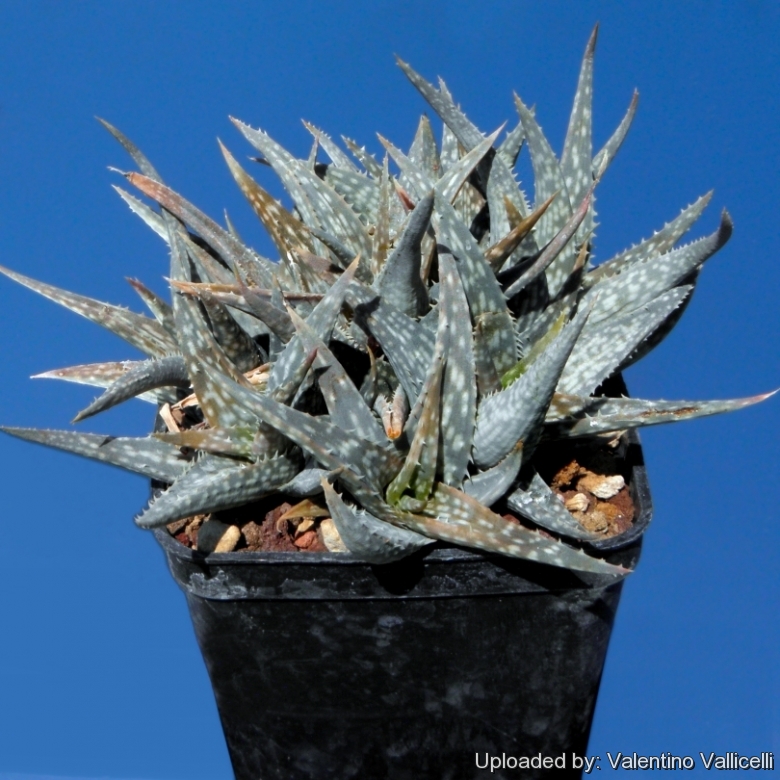
Aloe descoingsii cv. Blue Photo by: Valentino Vallicelli
Origin and Habitat: Garden origin.
Synonyms:
See all synonyms of Aloe descoingsii
back
Accepted name in llifle Database:Aloe descoingsii ReynoldsJ. S. African Bot. xxiv. 103 (1958).Synonymy: 2
Cultivars
(1):
back
Description: Aloe descoingsiiSN|613]]SN|613]] cv. blue is a petite cultivars or of Aloe descoingsiiSN|613]]SN|613]] (The smallest of all Aloes). It is similar in shape and size to the species but with slightly longer blue leaves and produces readily large crowded clumps of rosettes.
Stem: Acaulescent or very shortly caulescent, clumping freely forming dense groups
Leaves: About 8-10. Stiff, short, densely rosulate lanceolate, curled up into inside, attenuate 3 to 6 cm long, glaucous green, rough, with many dull white beautiful markings and distinct white cartilaginous marginal teeth.
Flowers: On a short (12-18 cm tall), graceful unbranched stem, scarlet-orange with yellow petal tips. The flowers are urceolate with a flat and shortly attenuate base, 7-8 mm long, 4 mm in diameter.
Blooming season (In Europe): Summer.
Subspecies, varieties, forms and cultivars of plants belonging to the Aloe descoingsii group
Bibliography: Major references and further lectures
1) Urs Eggli “Illustrated Handbook of Suculent Plants: Monocotyledons” Springer, 2001. Pages 114-115
2) Edgar Lamb, Brian Lamb “The Illustrated Reference on Cacti & Other Succulents" Volume 5 Blandford Press, 1978
3) Gordon D. Rowley “The illustrated encyclopedia of succulents” Crown Publishers, 01/Aug/1978
 Aloe descoingsii cv. Blue Photo by: Cactus Art
Aloe descoingsii cv. Blue Photo by: Cactus Art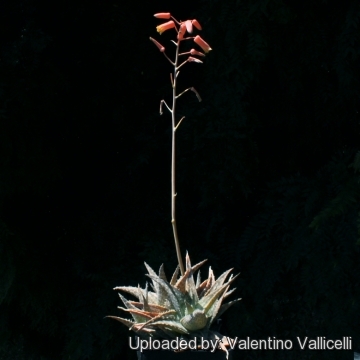 Aloe descoingsii cv. Blue Photo by: Valentino Vallicelli
Aloe descoingsii cv. Blue Photo by: Valentino Vallicelli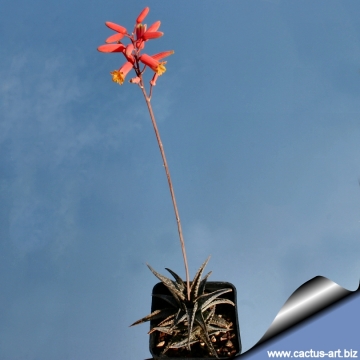 Aloe descoingsii cv. Blue Photo by: Cactus Art
Aloe descoingsii cv. Blue Photo by: Cactus Art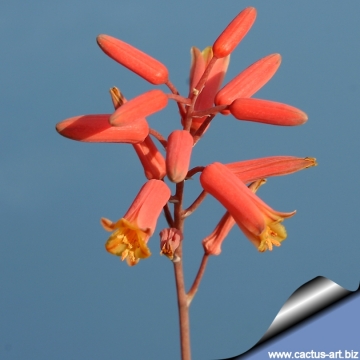 Aloe descoingsii cv. Blue Photo by: Cactus Art
Aloe descoingsii cv. Blue Photo by: Cactus Art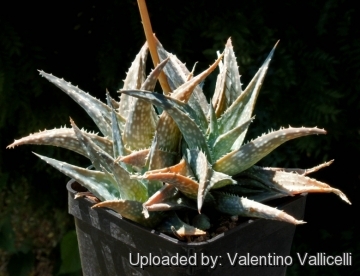 Aloe descoingsii cv. Blue Photo by: Valentino Vallicelli
Aloe descoingsii cv. Blue Photo by: Valentino VallicelliSend a photo of this plant.The gallery now contains thousands of pictures, however it is possible to do even more. We are, of course, seeking photos of species not yet shown in the gallery but not only that, we are also looking for better pictures than those already present.
Read More... Cultivation and Propagation: Aloe descoingsiiSN|613]]SN|613]] cv. blue is a most rewarding pot plant and one of the most striking species. It is easy to cultivate provided it is planted in a well-drained situation given adequate water but not over-watered.
Soil: Grow it in light, fertile, well-drained, moderate soils, with a slightly acidic pH (5-6).
Repotting: Use pot with good drainage.
Feeding: During the beautiful season it’s good to enrich the soil using a fertilizer rich in potassium and phosphorous, but poor in nitrogen, because this chemical element doesn’t help the development of succulent plants, making them too soft and full of water.
Exposure: It enjoys light-shade and clumps readily. It may be grown in full sun too but protect in summer from afternoon sun, and avoid reflected heat.
Plants grown outdoor can withstand light frost and prolonged drought and can survive often for several seasons without water, at which point the leaves turn a reddish colour, a sign generally associated with stress.
Hardiness: For safe cultivation it is best to avoid freezing temperatures. During the winter months, the plants should be grown cool to initiate flower development (about 5-10°C)
Watering: Water regularly during the growing season from spring to autumn. In winter watering this plant can be done once every 1-2 months, there is no need to mist the leaves.
Keep dry when night temperatures remain below 10° C. Water it less than average if in bigger pots.
Maintenance: Removal of old flower stalks. It is a suckering species, and one plant can eventually cover a large area. Divide the crowded clumps periodically.
Garden uses: Because of their symmetrical form these plants are very attractive when grown in pots, containers and rockeries. It grows much better outdoors in spring and summer, it is also perfect for the bright windowsill.
Reproduction: Usually by cuttings, it is also possible the propagation from seed which germinates easily if sown in well drained soil and covered lightly with fine sand. Seedlings grow fast, reaching flowering size in three to four years. Seeds must be sown as fresh as possible. Fresh seeds germinate quickly at 18°C.















